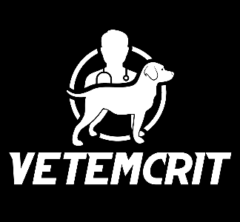| K+ Plasma Concentration (mmol/L or mEq/L) | Rate of K+ Supplementation (mEq/kg/hr) | K+ Recheck Frequency |
|---|---|---|
| 2-2.4 | 0.4-0.5 | Q2-4h |
| 2.5-2.9 | 0.3-0.4 | Q6-8h |
| 3-3.4 | 0.1-0.2 | Q12-24h |
| 3.5-4.5 | 0.05 | Q24h |
| >4.5-5 | Do not supplement |
| Degree of derangement | Patient's serum phosphate (mg/dl) or [mmol/L] | Rate of PO4 Supplementation (mmol/kg/hour) | PO4 Recheck Frequency |
|---|---|---|---|
| Mild hypophosphatemia | 2-2.7 or [0.65-0.9 mmol/L] | 0.01-0.02* | Q24H |
| Moderate hypophosphatemia | 1-2 or [0.33-0.65 mmol/L] | 0.03-0.06 | Q12-24H |
| Severe hypophosphatemia | <1 or [<0.33 mmol/L] | 0.06-0.12 | Q8-12H |
About this calculator
This calculator is designed to help veterinarians calculate insulin infusion rate as well as potassium and phosphate supplementation rate in small animal patients with Diabetic Ketoacidosis (DKA) and/or Hyperosmolar Hyperglycemic State (HHS).
Insulin Infusion
This calculator is programmed to use the variable-rate insulin infusion protocol (a 3-bag technique) with the maximum rate of insulin supplementation of 0.1 Unit/kg/hour if the fluid rate is 10 ml/hr (via the bag #1). The calculator will generate an insulin infusion sliding scale that will guide veterinarians and veterinary technicians on the rate of intravenous insulin and/or dextrose administration based on the current blood glucose levels that are monitored every 1-2 hours. When treating small animals with HHS, it may be recommended to decrease the insulin amount in the bag by half to provide insulin supplementation rate of 0.05 U/kg/hr at 10 ml/hr (the bag #1).
Ideally, the fluid rate via the bag #3 should be at least 2 ml/kg/hr to provide sufficient dextrose supplementation during insulin therapy, however there may be some exceptions.
Osmolality
The osmolality in bag #2 must not exceed 600 mOsm/kg if this solution is given via a peripheral catheter. The osmolality is calculated based on NaCl 0.9% being used as a fluid type where KCl and/or KPO4 were added. If osmolality exceeds 600 mOsm/kg and the solution has to run via a peripheral catheter, increase the fluid rate in the bag #2 until osmolality drops below 600. To maintain the same total fluid rate, decrease the fluid rate in bag #3 at the same time.
Phosphate Supplementation
This calculator is programmed to use the potassium phosphate (K-Phos) solution with concentration of potassium 4.4 mEq/ml and phosphate 3 mmol or mM/ml (available in the USA and some other countries). Do not use the phosphate supplementation feature if this phosphate-containing product is not available in your country.
It is important to remember that phosphate-containing solutions are INCOMPATIBLE with solutions that contain any calcium salts such as LRS, calcium gluconate, etc. Potassium phosphate injection is reportedly physically compatible with the following IV solutions: dextrose (any concentration), 0.45% to 0.9% sodium chloride, and sterile water.
Read more about phosphate supplementation and calculation here – Intravenous phosphate supplementation in dogs and cats.
Potassium Supplementation
This calculator is programmed to use the potassium chloride solution with concentration of 2 mEq/ml (available in the USA and some other countries). Do not use the potassium supplementation feature if this potassium product is not available in your country.
It is not recommended to exceed 0.5 mEq/kg/hr (K max), however there are some exceptions. Careful mixing of potassium chloride after addition to flexible bags of fluids is extremely important; the rates above >0.5 mEq/kg/hr can be used ONLY in situations of life-threatening symptomatic hypokalemic when you don’t have time to supplement potassium slower or during CPR. Patients receiving >0.4 mEq/kg/hr of K+ should receive constant ECG monitoring and serum K+ monitoring every 2-4 hours.
Read more about potassium supplementation and calculation here – Approach to Hypokalemia: Diagnosis and Treatment.
Small Animal Electrolyte and Acid-Base Mastery Certification Course (RACE-Approved for 12.5 CE hours)
If you are interested in receiving personal mentorship and want to truly master the management of electrolyte and acid-base disorders in dogs and cats, go to the VETEMCRIT ACADEMY!
Disclaimer
This veterinary DKA calculator is intended for informational and educational purposes only.
The creator of this tool is not responsible for clinical decisions or medical errors resulting from its use.
Users are encouraged to consult with a licensed veterinarian or medical professional to make informed decisions
